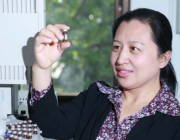Citation:
Zheng J, Hu M*, Peng JF, Wu ZJ, Kumar P, Li MR, Wang YJ, Guo S. Spatial distributions and chemical properties of PM2.5 based on 21 field campaigns at 17 sites in China. Chemosphere. 2016;159:480-487.
摘要:
Severe air pollution and its associated health impacts have become one of the major concerns in China. A detailed analysis of PM2.5 chemical compositions is critical for optimizing pollution control measures. In this study, daily 24-h bulk filter samples were collected and analyzed for totally 21 field campaigns at 17 sites in China between 2008 and 2013. The 17 sites were classified into four groups including six urban sites, seven regional sites, two coastal sites in four fast developing regions of China (i.e. Beijing-Tianjin-Hebei region, Yangtze River Delta, Pearl River Delta and Sichuan Basin), and two ship cruise measurements covered the East China Sea and Yellow Sea of China. The high average concentrations of PM2.5 and the occurrences of extreme cases at most sites imply the widespread air pollution in China. Fine particles were largely composed of organic matter and secondary inorganic species at most sites. High correlation between the temporal trends of PM2.5 and secondary species of urban and regional sites highlights the uniformly distributed air pollutants within one region. Secondary inorganic species were the dominant contributors to the high PM2.5 concentration in Northern China. However in Southern China, the relative contributions of different chemical species kept constant as PM2.5 increased. This study provides us a better understanding of the current state of air pollution in diversified Chinese cities. Analysis of chemical signatures of PM2.5 could be a strong support for model validation and emission control strategy. (C) 2016 Elsevier Ltd. All rights reserved.附注:
Ds1xfTimes Cited:0Cited References Count:45
